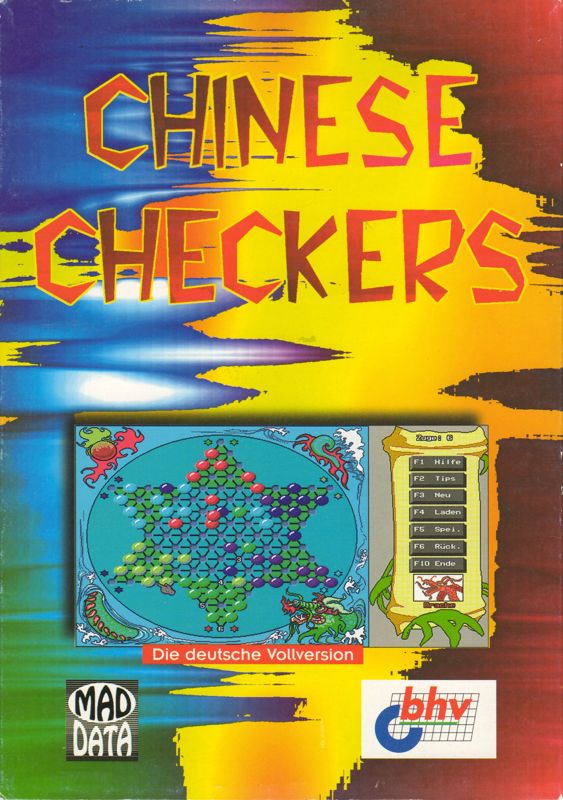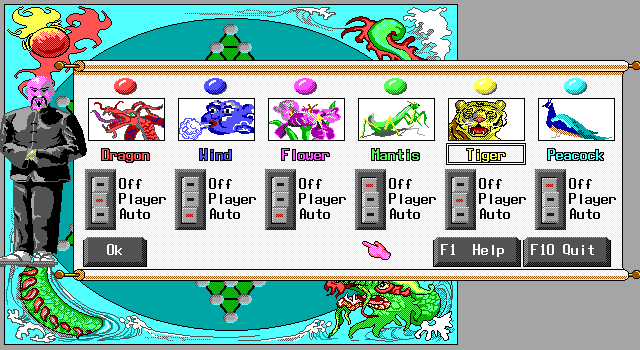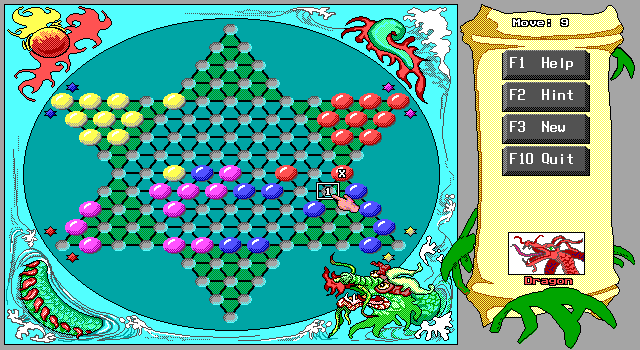Retro Replay Review
Gameplay
Chinese Checkers translates the familiar hop-and-jump mechanics of traditional checkers into a star-shaped battlefield where up to six players vie to be the first to move all their pieces across the board. Unlike a standard 8×8 grid, this version uses twice as many marbles—twelve per player—which adds layers of strategy and possibility. Players must choose whether to advance single steps into adjacent holes or chain multiple hops over friend and foe alike, creating thrilling momentum swings.
For veterans of “Argo Checkers” or “Hexxagon,” be warned: the extra pieces and increased player count can lead to surprising congestion in the crystal-clear pathways. It’s common to see elaborate maneuvers where one player sets up a bridge of hops for a rival, unleashing laughter or groans around the table. The game balances carefully between planning long multi-jump sequences and seizing opportunistic single moves when the board opens up.
Turn order moves clockwise, and while those at the head benefit from first-move advantage, later players can capitalize on cleverly arranged hops to leapfrog into the center. The interplay of offense and defense is magnified by how crowded the star points become; suddenly blocked lanes force you to adapt, crowd opponents, or set up intricate relay jumps. The rules are easy to learn, but mastering the geometry of the six-point board takes time and repeated play.
Graphics
As a digital rendition of a classic board game, Chinese Checkers keeps visuals clean and functional. The star-shaped board is laid out in soft pastels—light blues, greens, and yellows—so each player’s marbles stand out in vibrant red, blue, green, purple, orange, and white. This color coding makes it simple to track your own pieces at a glance, even when multiple marbles converge at a single junction.
The marble models themselves have a subtle gloss shader that catches light realistically, giving the impression of polished glass pieces under a gentle lamp. Animations are smooth and deliberate: each hop snaps into place with satisfying precision, while multi-jump sequences unfold fluidly. Though there’s no flashy particle effects or background scenery, the minimal interface directs your focus squarely on the marbles and the shifting network of pathways.
Menus and prompts maintain the subdued, board-game style—wood-grain textures for table tops, simple icons for undoing moves or changing player colors. If you crave high-octane visuals, this isn’t the game for you; but if you appreciate a timeless design that highlights tactical thought over visual spectacle, the aesthetics here deliver exactly what you need.
Story
Truth be told, Chinese Checkers carries little narrative beyond its origins as a 19th-century adaptation of a German game called “Sternhalma.” There’s no campaign, no characters to follow, and no scripted events—just the pure contest of wits as players race their marbles to the opposite point of the star. The lack of lore may feel sparse to gamers hungry for epic backstory, but it also preserves the classic, unadulterated nature of the board-game experience.
What history there is resides in the name: despite popular belief, Chinese Checkers was invented in the United States and only later marketed internationally. The digital version offers a brief info screen explaining these trivia points, but beyond that, it trusts you to bring your own stories—be it family rivalries, friendly wagers, or late-night showdowns with coworkers.
If you approach this as a social parlor game, the absence of narrative becomes a strength. Every match generates its own drama: a daring leap across four pieces, an epic comeback from behind, or the tense final moves when two players stand on the brink of victory. Those moments create tales worth retelling, far more engaging than any pre-packaged storyline.
Overall Experience
Chinese Checkers proves itself as an ideal gateway between casual party games and deeper strategic fare. With rules straightforward enough for newcomers, yet variables plenty for seasoned tacticians, it strikes a sweet spot that keeps players of different skill levels engaged. The six-player option can lead to chaotic, laughter-filled sessions, while a head-to-head duel heightens the tension to near chess-like intensity.
Online and local modes both accommodate up to six participants, so it’s easy to gather friends around a tablet or connect remotely. Matchmaking is swift, and replays load in seconds, minimizing downtime between games. For a board-game adaptation, it nails the quick-setup, quick-play formula that modern gamers appreciate.
Ultimately, Chinese Checkers succeeds because it preserves the spirit of the original tabletop version while enhancing accessibility and adding digital conveniences like move hints or undo options. Whether you’re looking for lighthearted competition at a family gathering or a deeper strategic challenge in a competitive circle, this translation delivers a polished, timeless experience that deserves a spot in any gamer’s digital library.
 Retro Replay Retro Replay gaming reviews, news, emulation, geek stuff and more!
Retro Replay Retro Replay gaming reviews, news, emulation, geek stuff and more!







Reviews
There are no reviews yet.